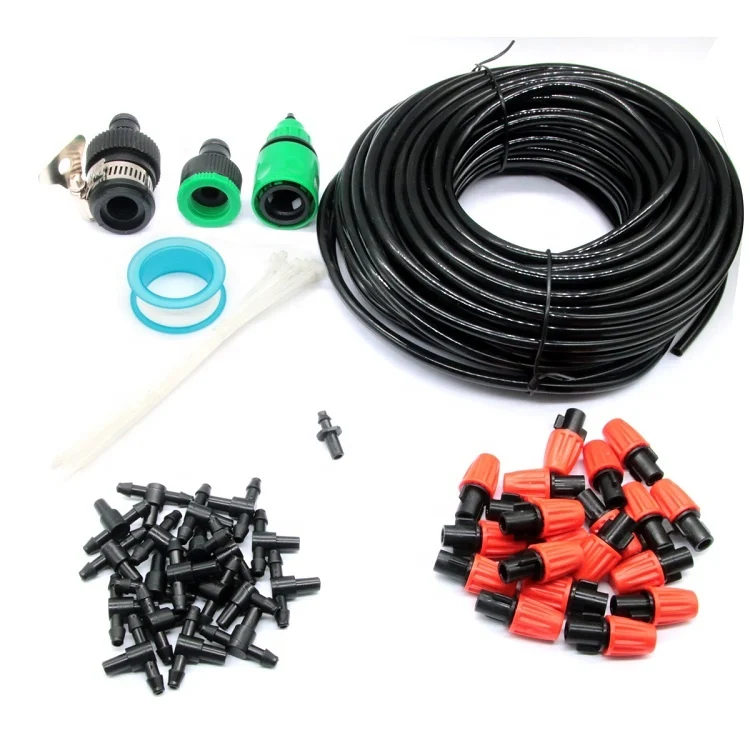How We Install Drip Irrigation System in Kenya: A Step-by-Step Guide by Our Agronomist

Water scarcity presents a major challenge for farmers across Kenya. In response, many are turning to drip irrigation to boost crop yields while using less water. Both smallholder and large-scale farmers are embracing this technology to secure their harvests and improve profitability.
At our company, we offer four main drip irrigation kit packages designed to meet the needs of any farm size:
- 1/8 Acre Drip Irrigation Kit
- 1/4 Acre Drip Irrigation Kit
- 1/2 Acre Drip Irrigation Kit
- 1 Acre Drip Irrigation Kit
This guide provides practical, step-by-step instructions from our expert agronomists to help you install your drip system correctly and efficiently.
What is a Drip Irrigation Kit?
Drip irrigation is a method that delivers water slowly and directly to the root zone of plants. A network of pipes, tubes, and emitters releases water drop by drop, minimizing evaporation and runoff. Compared to traditional flood or sprinkler irrigation, this precise approach saves a significant amount of water and fertilizer.
This efficiency makes it ideal for growing popular crops in Kenya like tomatoes, onions, capsicum, sukuma wiki (collard greens), and watermelons.
What You Need Before Installation
Before you begin, proper preparation is key to a successful installation.
First, assess your land and ensure you have a reliable water source. This could be a dam, well, borehole, river, or water tank. It is also important to incorporate a filtration system. Filters are crucial for preventing emitters from clogging with dirt or debris, which protects your investment and ensures the system functions correctly. You will also need basic tools like pipe cutters and fittings.
Step-by-Step Installation Guide
Our agronomists follow a proven process to ensure every drip system is installed for optimal performance.
Step 1: Site Preparation
Start by clearing the land of weeds and debris. Level the ground and prepare the planting beds to ensure water distributes evenly across the field.
Step 2: Laying the Main Line
The main line, typically made of PVC or HDPE pipes, transports water from the source to the field. Lay it according to your farm’s layout, connecting it securely to your water pump or tank.
Step 3: Installing the Sub-Main Line and Control Valves
Sub-main lines branch off the main line to distribute water to different sections of your farm. Install control valves (shut-off valves) on each sub-main. These valves allow you to control water flow to specific zones, which is useful for irrigating different crops or managing repairs.
Step 4: Laying the Drip Laterals (Drip Tapes)
Lay the drip tapes or laterals along the crop rows. The spacing depends on your crop; for example, tomatoes require different spacing than onions or sukuma wiki. Ensure the lines are straight for uniform watering.
Step 5: Testing the System
Once everything is connected, turn on the water to test the system. Walk through the field and check for any leaks, blockages, or areas with uneven water flow. Make any necessary adjustments to ensure the system is working perfectly.
Step 6: Training on Operation and Maintenance
Proper training is vital for long-term success. Our team will show you how to operate the valves, when to irrigate (early morning or late evening is best), and how to perform routine maintenance, such as cleaning filters.
Why Drip Irrigation is a Smart Investment
Switching to drip irrigation offers significant advantages for Kenyan farmers.
- Water Savings: It can reduce water consumption by up to 60%.
- Higher Yields: Precise watering leads to healthier plants and increased yields per acre.
- Reduced Weeds & Disease: By keeping the areas between rows dry, it limits weed growth and reduces fungal diseases.
- Efficient Fertilizing: Water-soluble fertilizers can be applied directly to the roots through the system, a process called fertigation.
The initial cost of drip kits varies by size and quality, but the long-term returns from water savings and higher yields make it a profitable investment for any farmer.
Get Your Drip Irrigation Kit Today
Ready to transform your farm’s productivity? Our team of professional agronomists provides custom drip irrigation solutions tailored to your specific crops and land size. We also offer after-sales support, including training and maintenance, to ensure you get the most out of your system.
Contact us today to get a quote and start your journey toward more efficient and profitable farming.